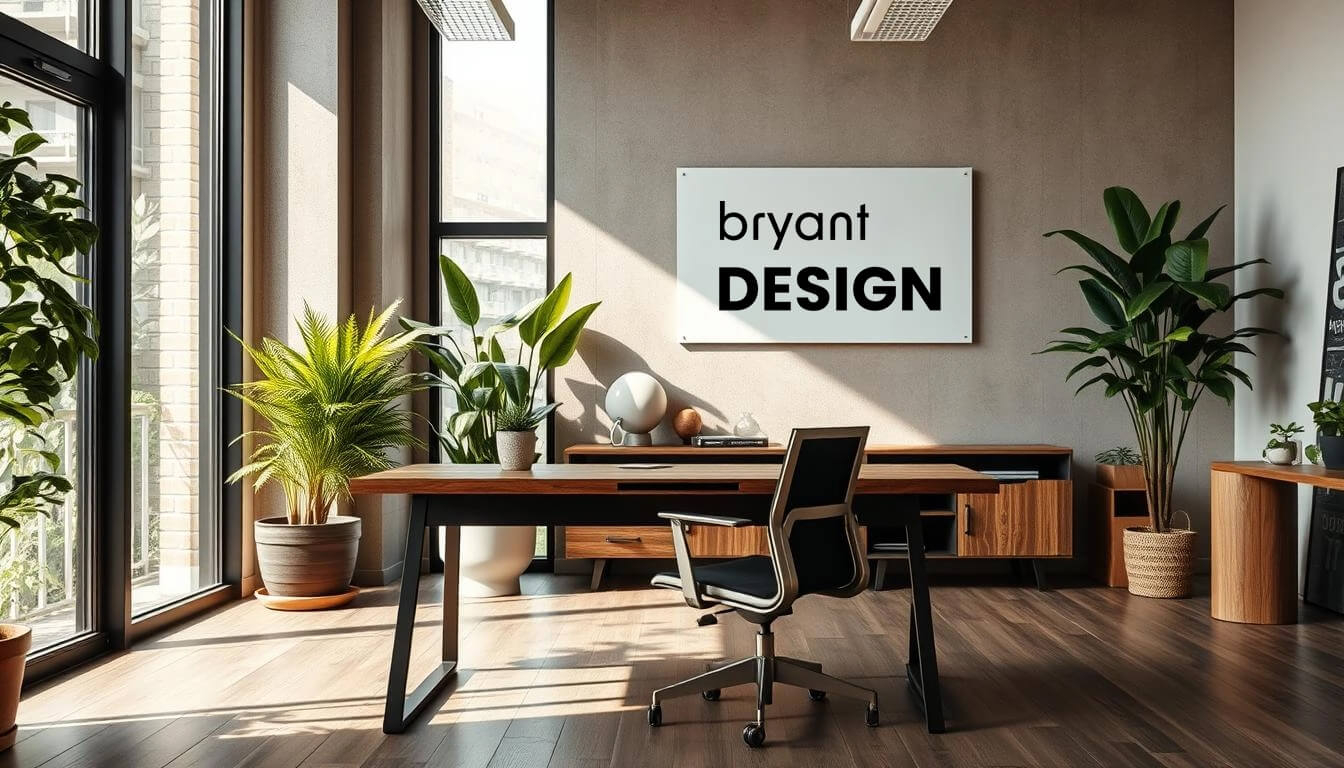Companies with strong design leadership do much better. They can grow their revenue by up to 211%. It’s not just about having a good design team. It’s about having a clear vision that guides everyone.
Design management is about planning and overseeing design work. But design leadership is about setting the direction and goals. Knowing this difference is key to success in design.
Key Takeaways
- Design leadership is distinct from design management.
- Strong design leadership can significantly impact revenue growth.
- Understanding the role of design leadership is crucial for success.
- Design leadership involves setting direction and goals.
- Effective design leadership guides the entire organization.
The Critical Distinction: Leadership vs. Management in Design
Effective design leadership is not about managing tasks. It’s about inspiring a shared vision. As a design leader, you set the vision, strategy, and values. You make sure they match business goals and what customers want.
How Leaders Inspire Rather Than Direct
Leaders inspire by creating a culture of creativity and innovation. They let designers own their work. They encourage trying new things and learning from mistakes.
Process Optimization and Resource Allocation
Design leaders make processes better by streamlining them. They also use resources well. This helps design teams do their best work fast.
Measuring Design Performance and Outcomes
To check design performance, leaders look at important metrics and results. They use data to make smart choices. This shows how design adds value to the company.
The Mindset of a Design Leader
Design leaders see challenges as chances to be creative. They turn obstacles into opportunities for new ideas.
Turning Constraints into Creative Opportunities
Make your team see limits as chances to be creative. Encourage them to think differently and find new ways to solve problems. This way, you’ll boost innovation and build a strong team.
Not every project will succeed, but failures teach us a lot. As a leader, make sure your team feels safe to try new things. Learn from mistakes to do better next time.
This mindset helps you keep improving and creates a creative, resilient team.
How Design Leaders Build Trust in Branding
Building trust in branding is not just luck. It’s the work of design leaders. You can shape your brand’s identity and gain trust from your audience.
Companies like Apple and Airbnb know how to build trust. Let’s look at how they do it.
Apple’s Design-Led Transformation
Apple is known for innovation and quality. Their design has built trust with customers. They focus on sleek, easy-to-use designs, winning over many fans.
Airbnb’s Design Evolution
Airbnb has also grown through design. They focus on making things easy for users. This has made Airbnb a top choice for travelers.
| Company | Design Leadership Strategy | Outcome |
|---|---|---|
| Apple | Sleek, intuitive design | Loyal customer base |
| Airbnb | User experience prioritization | Increased user trust |
Learning from these examples can help you. Good design leadership makes choices that connect with your audience.
The Design Manager’s Toolkit vs. The Leader’s Influence
Design managers and leaders have different roles in today’s fast world. A design manager uses tools to manage projects. But a leader inspires and guides the team to find new ideas.

Situational leadership is important for design leaders. It means changing how you lead based on the team’s needs. This way, you help your team do their best work.
Balancing Control and Autonomy
Design leaders face a big challenge: finding the right balance. Too much control can stop creativity. But too little can cause confusion.
Good leaders know how to give their team freedom to be creative. They also keep a clear direction. This way, they get the best from their team.
Knowing the difference between a design manager and a leader helps you lead better. It means using situational leadership and finding the right balance. This leads to better and more creative designs.
Cultivating Design Integrity in Your Team
It’s key to have design integrity in your team for great design results. Design integrity means everything looks the same and works well together. It makes your brand look good and feel right to your audience.
Defining Your Design North Star
Your design North Star guides all your design choices. It’s the base of your brand’s look. To find it, know your brand’s main values and goals. Understand what your brand stands for, who it’s for, and what makes it special.
| Design Element | Characteristics | Benefits |
|---|---|---|
| Color Palette | Consistent, harmonious colors | Enhances brand recognition |
| Typography | Clear, legible fonts | Improves readability |
| Imagery | Relevant, high-quality images | Supports brand messaging |
Aligning Team Values with Design Decisions
It’s important to match your team’s values with design choices. When your team gets your brand’s values, they make choices that help your mission. This makes sure everything looks the same and strengthens your brand’s identity.
By setting your design North Star and making sure your team’s values match design choices, you build design integrity. This leads to better design and helps your brand succeed.
How to See Better Designs Emerge Through Leadership
To see better designs, you need a vision that inspires your team. Good design leadership is more than just managing projects. It’s about making a space where creativity can grow.
Building Trust Through Vulnerability
Building trust is key to a creative space. When leaders share their own struggles, it lets team members feel safe to share their ideas.
Celebrating bold ideas is very important. It shows that trying new things is valued, even if it doesn’t work out.
From Concept to Reality: Supporting Innovation
Supporting innovation means giving teams what they need. Leaders should make sure teams have the tools and freedom to make their ideas real.
By using these methods, leaders can build a culture that supports creativity and innovation. This leads to better designs.
Building Marketing Credibility Through Design Excellence
To stand out, businesses need design excellence for better marketing. Today, how a brand looks and feels is key to getting and keeping customers.
Speaking the Language of Business
Good design leaders talk business, turning designs into results. They know the company’s aims, who they’re for, and what’s new in the market. This way, they make ads that people like and that help the business grow.
Designers face a big challenge: showing how design pays off. They must use data to show how their work boosts sales, keeps customers, and improves how people see the brand. This way, businesses can grow smartly.
By aiming for design excellence and showing its worth, companies can earn marketing credibility. This means more than just pretty designs. It means designs that help the business succeed, proving the ROI of good design.
Fostering Brand Loyalty Through Consistent Design Leadership
Consistent design leadership is very important for brands. It helps keep customers loyal. When every design fits the brand’s vision, it makes the brand easy to recognize.
Design Touchpoints That Build Relationships
Design touchpoints are key for customer relationships. They include packaging, ads, and digital stuff. Good design leadership makes sure these touchpoints work well together.

Many brands keep their design consistent. This makes customers very loyal. Apple, for example, has a clear design style in all its products and ads.
Brands like Coca-Cola and Nike also keep their design consistent. This makes sure their message is always clear.
By focusing on consistent design, businesses can build strong loyalty. This leads to long-term success.
Becoming a True Design Leader: Essential Skills to Develop
To be a great design leader, you need a special mindset and skills. These help you be creative, innovative, and grow your team. It’s key to stand out as a leader who inspires and moves your team ahead.
Storytelling as a Leadership Tool
Storytelling is a strong tool for design leaders. It’s about telling stories around your designs that connect with people. Good storytelling makes your designs stick in people’s minds and have more impact.
Being able to explain design concepts simply is crucial. It helps share your vision with others, making teamwork and decisions easier.
Creating Growth Paths for Your Team
True design leaders know how to grow their team’s talent. By setting up growth paths, you improve your team’s skills. This creates a culture of learning and innovation. Your team will be more motivated and ready for design challenges.
Overcoming Common Challenges in Design Leadership
In design leadership, you face challenges like building advocacy networks and preventing burnout. You need to overcome these to reach your design goals.
Building Design Advocacy Networks
Creating a strong advocacy network is key. It means cultivating relationships with people to boost design quality. A good network offers support and resources.
| Strategy | Benefits |
|---|---|
| Engage with stakeholders | More support for design projects |
| Foster a culture of design awareness | Team members work better together |
Preventing Burnout in Creative Teams
Stopping burnout keeps your team healthy and productive. Ways to do this include encouraging work-life balance and offering chances to grow.

By tackling these challenges, design leaders can build a place where creativity and excellence thrive.
Conclusion: Transforming Design Culture Through Leadership
Good design leadership is key to changing design culture in a company. It helps create a place where new ideas and excellence thrive. You learn that leading design isn’t just about managing teams. It’s about inspiring everyone to work towards the same goal.
To change design culture, you need to know what your company stands for. Being a design leader helps make your brand’s identity clear. This can make people more loyal to your brand and improve how it’s seen.
Being a design leader is a journey of learning and getting better. You need to learn new skills and face challenges head-on. This way, you can make real changes in your company. And you’ll be on the path to a better design culture.